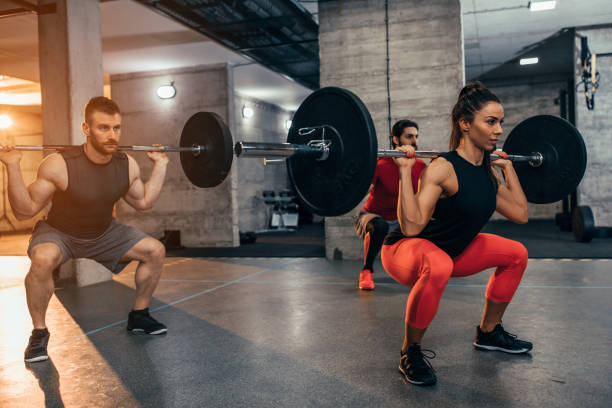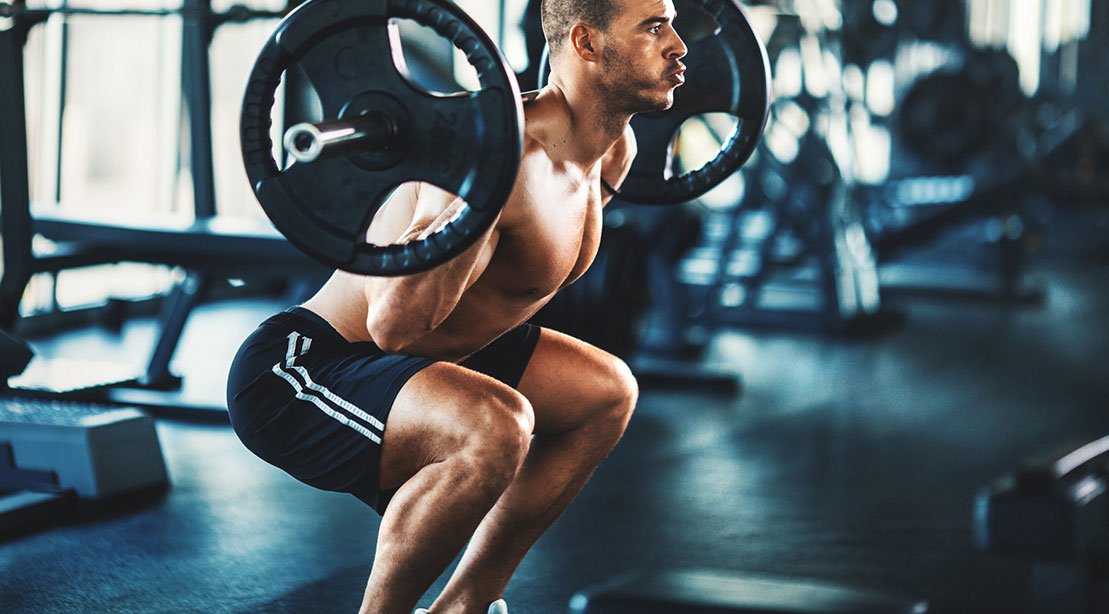Squats are one of the most important exercises you can do for your overall strength and fitness. They work a large number of muscles, including your quads, hamstrings, glutes, and core. Squats also help to improve your balance, coordination, and mobility.
If you're looking to improve your squat PR, conjugate training is a great option. Conjugate training is a type of periodization that involves using a variety of different training methods to stimulate different types of adaptation. This helps you to get stronger, faster, and more powerful all at the same time.
What is Conjugate Training?
Conjugate training was developed by Louis Simmons, the founder of Westside Barbell. Simmons was a powerlifter who was always looking for ways to improve his strength and performance. He found that by using a variety of different training methods, he could get stronger faster than he could by using traditional training methods.
Conjugate training is based on the principle of variety. You use a variety of different training methods, including:
- Max effort training: This is where you lift as much weight as you can for a single rep.
- Dynamic effort training: This is where you lift submaximal weights with as much speed as possible.
- Repetition maximum training: This is where you lift a weight for as many reps as possible.
You use these different training methods in a variety of different ways. For example, you might do max effort training one day, dynamic effort training the next day, and repetition maximum training the day after that. You might also use a combination of different training methods on the same day.

How to Use Conjugate Training to Improve Your Squat PR
If you're looking to improve your squat PR, you can use conjugate training in the following way:
- Start with a max effort squat: This is the most important part of your conjugate training program. You need to find a weight that you can only squat for 1-3 reps. Once you've found this weight, squat it as many times as you can.
- Follow up with dynamic effort squats: The next day, you'll do dynamic effort squats. These are squats that you do with submaximal weights (about 60-70% of your 1RM) with as much speed as possible. You'll do 3-5 sets of 3-5 reps.
- Finish with repetition maximum squats: On the third day, you'll do repetition maximum squats. These are squats that you do with a weight that you can squat for as many reps as possible. You'll do 3-5 sets of 8-12 reps.
You'll repeat this cycle for 4-6 weeks. After that, you'll deload (reduce the weight you're lifting) and start the cycle again.
Benefits of Conjugate Training
Conjugate training has a number of benefits, including:
- It helps you to get stronger faster: By using a variety of different training methods, you're able to stimulate different types of adaptation. This helps you to get stronger faster than you could by using traditional training methods.
- It helps you to improve your speed and power: Dynamic effort training helps to improve your speed and power. This is important for any sport or activity that requires you to move quickly and explosively.
- It helps you to stay healthy: Conjugate training helps to prevent injuries by using a variety of different training methods. This helps to keep your muscles and joints healthy and strong.
If you're looking to improve your squat PR, conjugate training is a great option. It's a time-tested method that has helped many lifters to reach their goals. So give it a try and see how it works for you.

Here are some additional tips for using conjugate training to improve your squat PR:
- Make sure you're eating enough calories and protein: If you're not eating enough, you won't have the energy to train hard or recover properly.
- Get enough sleep: Sleep is essential for muscle growth and repair. Make sure you're getting at least 7-8 hours of sleep per night.
- Listen to your body: If you're feeling pain, take a day off from training. Don't push yourself too hard, especially when you're first starting out.
- Be patient: It takes time to build strength and muscle. Don't get discouraged if you don't see results immediately. Just keep training hard and eating right, and you'll eventually reach your goals.
- Use a variety of exercises: Don't just squat. Include other exercises in your training program that will help to strengthen your squat, such as leg presses, lunges, and leg extensions.
- Use a variety of rep ranges: Don't just squat for low reps. Include sets of 8-12 reps in your training program to help build muscle mass.
- Use a variety of intensities: Don't just squat at one intensity. Include sets of light, medium, and heavy weight in your training program to help stimulate different types of adaptation.
- Use a variety of tempos: Don't just squat with a constant tempo. Vary the tempo of your squats to help improve your speed and power.
- Use a variety of techniques: Don't just squat with a high bar position. Experiment with different bar positions to find one that works best for you.
- Use a variety of accessories: Don't just squat. Include other exercises in your training program that will help to improve your squat, such as core exercises, mobility exercises, and conditioning exercises.
By following these tips, you can use conjugate training to improve your squat PR and reach your strength and fitness goals.
Here are some common mistakes to avoid when using conjugate training:
- Not eating enough: If you're not eating enough, you won't have the energy to train hard or recover properly. Make sure you're eating enough calories and protein to support your training goals.
- Not getting enough sleep: Sleep is essential for muscle growth and repair. Make sure you're getting at least 7-8 hours of sleep per night.
- Pushing yourself too hard: It's important to listen to your body and not push yourself too hard, especially when you're first starting out. If you're feeling pain, take a day off from training.
- Not being patient: It takes time to build strength and muscle. Don't get discouraged if you don't see results immediately. Just keep training hard and eating right, and you'll eventually reach your goals.
If you're looking for a way to improve your squat PR, conjugate training is a great option. It's a time-tested method that has helped many lifters to reach their goals. So give it a try and see how it works for you.
Monday:
- Max effort squats: 3 sets of 1-3 reps at 90-95% of your 1RM
- Dynamic effort squats: 3 sets of 3-5 reps at 60-70% of your 1RM
Wednesday:
- Speed work: 3 sets of 10 reps at 50% of your 1RM
- Assistance work: Leg press, lunges, leg extensions, hamstring curls, calf raises
Friday:
- Repetition maximum squats: 3 sets of 8-12 reps at 70-80% of your 1RM
- Assistance work: Core exercises, mobility exercises, conditioning exercises
Saturday:
- Active recovery: Light cardio, yoga, swimming
Sunday:
- Rest
This is just a sample program, and you may need to adjust it based on your individual needs and goals. But if you follow this program consistently, you should see significant improvements in your squat PR in a relatively short period of time.

Here are some additional things to keep in mind when using conjugate training:
- Be patient: It takes time to build strength and muscle. Don't get discouraged if you don't see results immediately. Just keep training hard and eating right, and you'll eventually reach your goals.
- Listen to your body: If you're feeling pain, take a day off from training. Don't push yourself too hard, especially when you're first starting out.
- Experiment: Don't be afraid to experiment with different exercises, rep ranges, intensities, and tempos to find what works best for you.
- Have fun: Conjugate training can be a lot of fun. So enjoy the process and don't take it too seriously.
- Variety: Conjugate training is all about variety. By using a variety of different exercises, rep ranges, intensities, and tempos, you can stimulate different types of adaptation and avoid plateaus.
- Intensity: Conjugate training is also about intensity. By lifting heavy weights, you can build strength and muscle mass. However, it's important to be careful not to overdo it. If you're not used to lifting heavy weights, start with lighter weights and gradually increase the weight as you get stronger.
- Recovery: Conjugate training is a demanding style of training, so it's important to give your body time to recover. Make sure you're getting enough sleep and eating a healthy diet. You may also want to consider using a foam roller or other recovery tools.
- Nutrition: Nutrition is essential for any type of training, but it's especially important for conjugate training. Make sure you're eating enough calories and protein to support your training goals. You may also want to consider taking a pre-workout supplement or post-workout recovery shake.
- Mental toughness: Conjugate training is a mental challenge as well as a physical challenge. You need to be mentally tough to push yourself through tough workouts and stay motivated when you're not seeing results immediately.
If you can follow these tips, you'll be well on your way to using conjugate training to improve your squat PR and reach your strength and fitness goals.